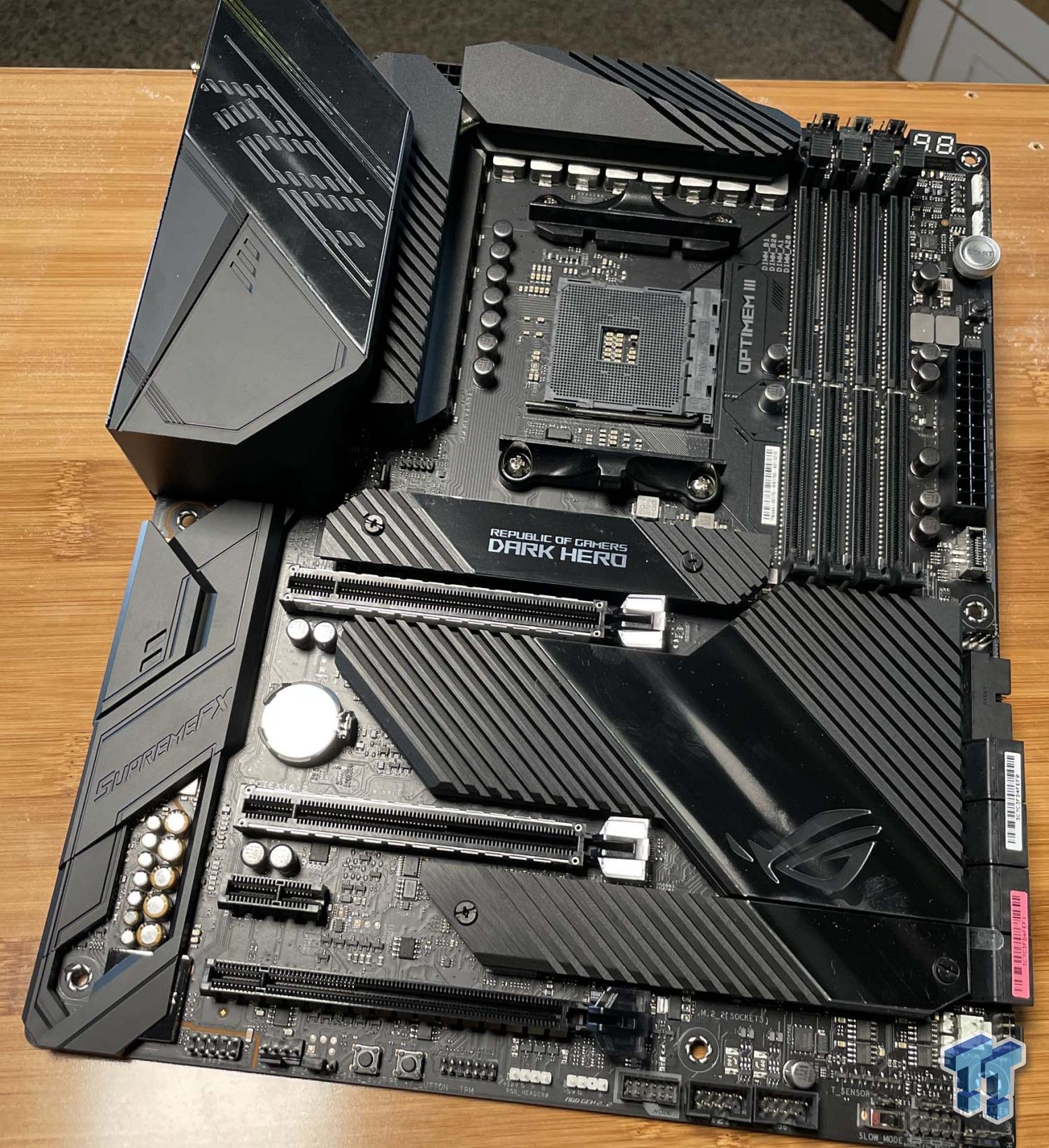At one point I made a big deal in the Zen2 speculation thread(s) about how VRM current rating might be a problem for some boards. It turns out that 3000 and 5000-series CPUs use a lot less current (and a lot more voltage) than I thought was probable.
Overbuilt VRMs are nice, but as long as your VRM can handle somewhere in the 140a range without overheating then you can probably run any AM4 CPU you can throw at it. The most current I can draw with my 3900x (stock) is 128a running Prime95 SmallFFTs, and a 5900x shouldn't be any different @ stock given the identical PPT ratings. I think I could pull more with PrimeGRID but not by much. Any board with a peak current load rating of ~260a would handle a 3900x or 5900x without breaking a sweat (it's at lower peak current loads that the VRMs have to start working harder, which leads to them overheating).
As you can see from this review:
ASUS' ROG VIII Dark Hero is gaining a lot of hype for its sleek aesthetics, but there's more under the hood! Let's take a look.

www.tweaktown.com
The peak current loads are absurdly high compared to what a 5900x should draw @ stock, so you aren't in any trouble here.
If you want to maintain high stock boost clocks . . . really it's limited by the stock PPT of 142W, though cooling can play a part here as well. I'm not sure how Vermeer behaves, but Matisse likes temps below 70C, and it really likes temps below 50C. You get slightly improved voltage/clockspeed curves from the boost algo at lower temps, effectively raising your clocks even if you never raise PPT.



